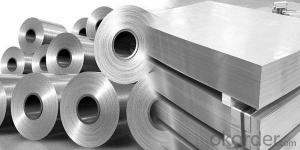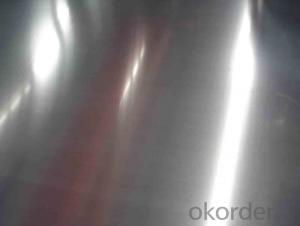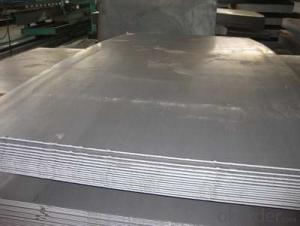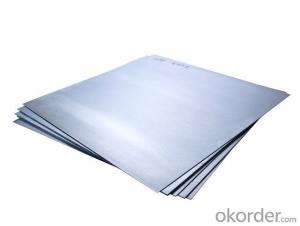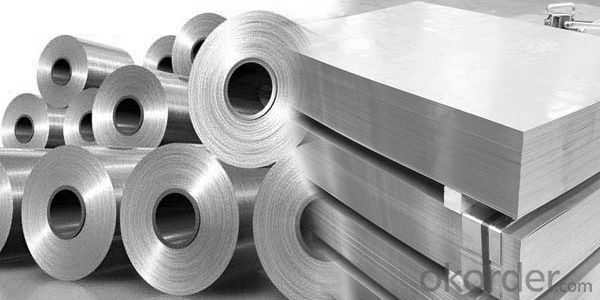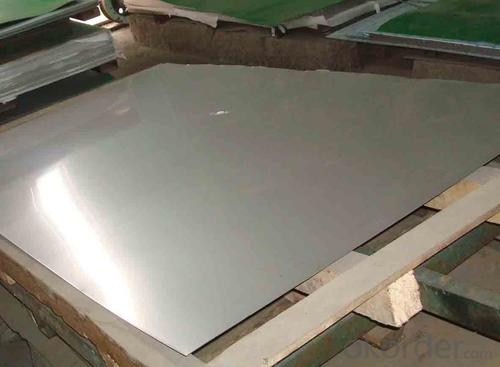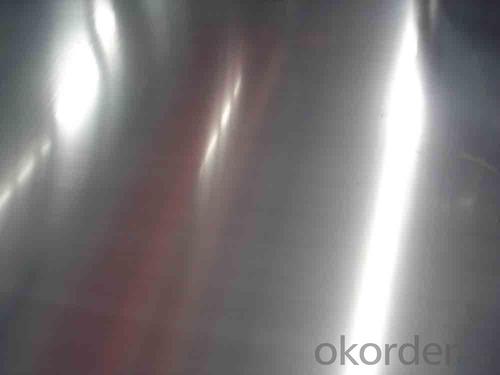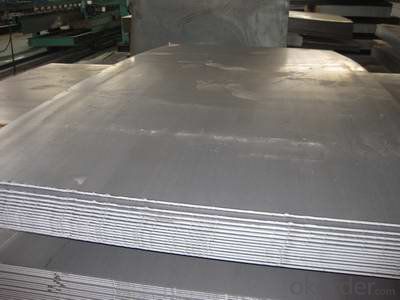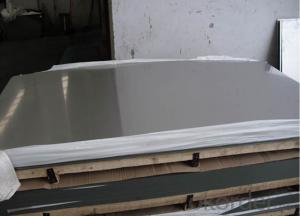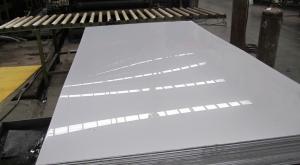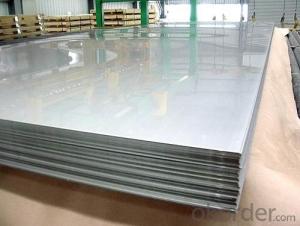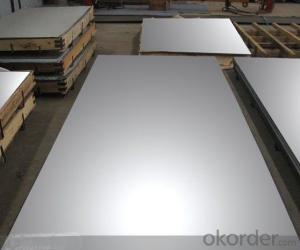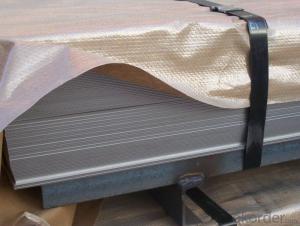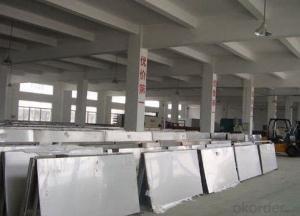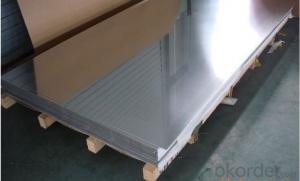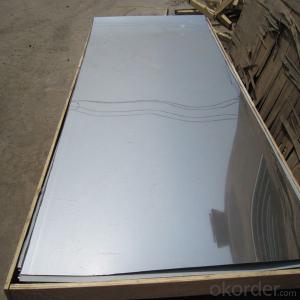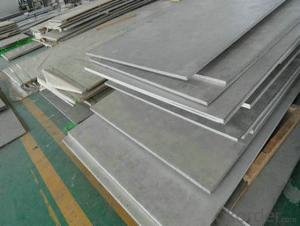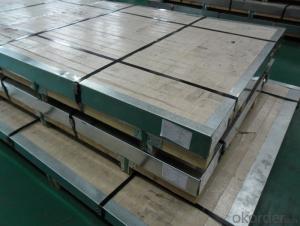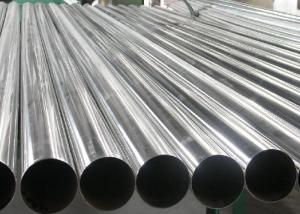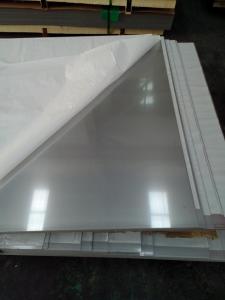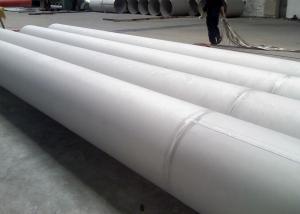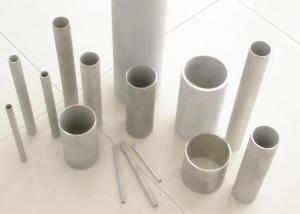Stainless Steel Sheet Price 316l with No.4 Surface Treatment
- Loading Port:
- Shanghai
- Payment Terms:
- TT OR LC
- Min Order Qty:
- 500 m.t.
- Supply Capability:
- 5000000 m.t./month
OKorder Service Pledge
OKorder Financial Service
You Might Also Like
Hot sale stainless steel sheet 201/202/304/304l/310S/309S/316L/316Ti/316/321/410/420/430/444/443/409L,and 904L.
Description of Stainless Steel Sheet:
Description | steel sheet,hot rolled steel sheet,cold rolled steel sheet, steel sheet,sheet,steel plate |
Standard | ASME, ASTM, EN ,BS,GB,DIN, JIS etc |
Application | Steel sheet applies to construction field, ships building industry, petroleum & chemical industries, war and electricity industries, food processing and medical industry, boiler heat exchanger, machinery and hardware fields. |
Packaging | Standard export sea-worthy packing |
Delivery time | 10-30 days |
Quality | No.1 |
Productivity | 500 tons/Day |
Note | Our company has cooperative relation between the domestic agents. Stainless steel sheet can be made accordingto the customers requirements. Fasten delivery. Quality assured. |
Contacts | If you have any question,please feel free contact me. |
Stainless steel sheet surface finish characteristics
Surface finish | Characteristics and application |
2B | The surface brightness and flatness of no2B is better than no2D. then through a special surface treatment to improve its mechanical properties,No2B could nearly satisfy comprehensive uses. |
No.1 | Polished with abrasive belt of grit#100-#200, have better brightness with discontinuous coarse stria, used as inner and external ornaments for building, electrical appliances and kitchen utensils etc. |
No.4 | Polished with abrasive belt of grit #150-#180,have better brightness with discontinuous coarse stria, but thinner than No3, are used as bathtub buildings inner and external ornaments electrical appliances kitchen utensils and food processing equipment etc. |
HL | Polished with abrasive belt of grit #150-#320 on the NO.4 finish and has continuous streaks, mainly used as buildings ornaments elevators, door of building, frontal plate etc. |
BA | Cold rolled, bright annealed and skin-passed, the product have excellent brightness and good reflexivity like mirror, kitchen apparatus, ornament etc. |
8K | The product have excellent brightness and prefer reflexivity can to be the mirror. |
Main Features of stainless steel sheet :
•Escalator, Elevator, Doors
•Furniture
•Production tools, Kitchen appliances, freezers, cold rooms
•Auto Parts
•Machinery and Packaging
•Equipment and Medical devices
•Transport system
Product Details:
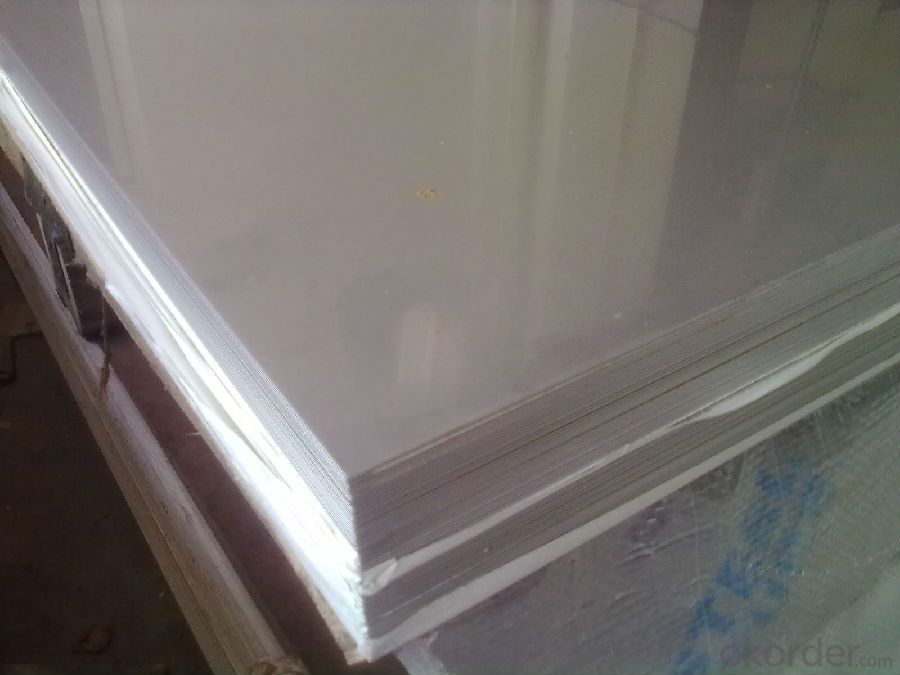
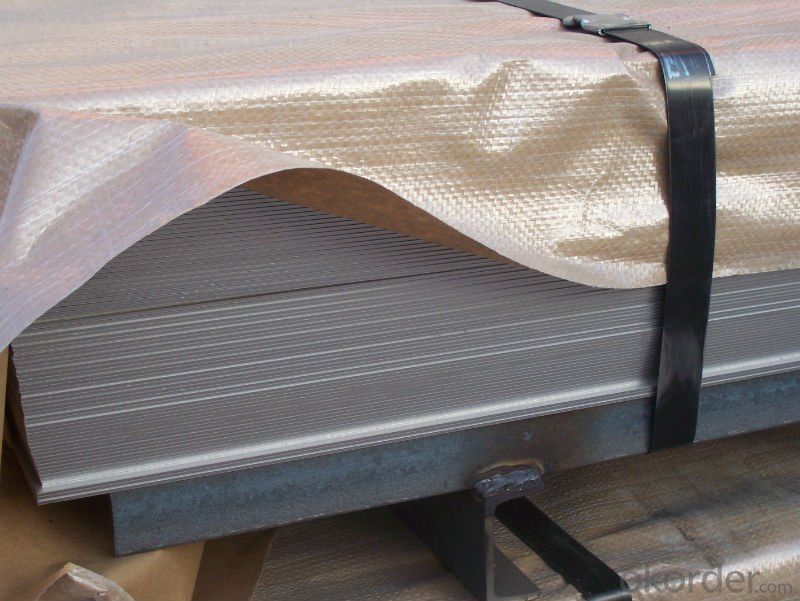

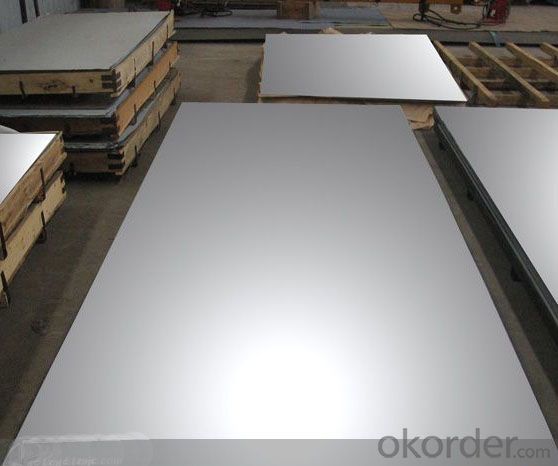
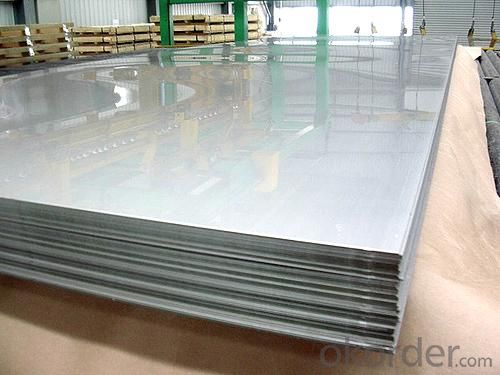
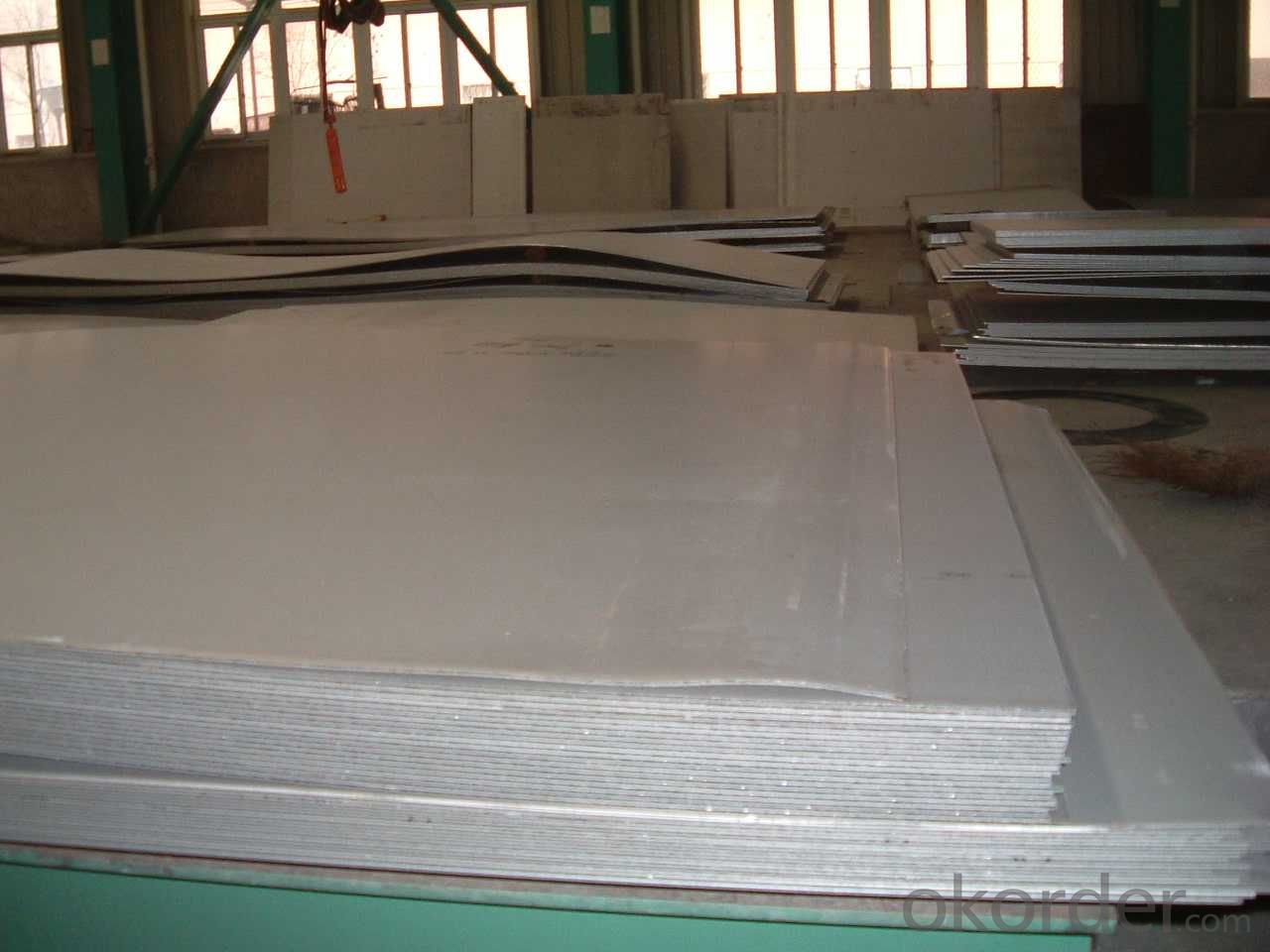
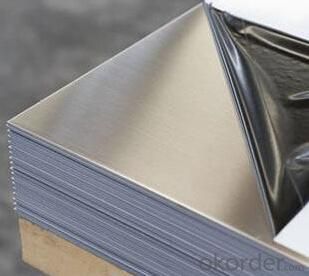
Cold Rolled and Hot Rolled:
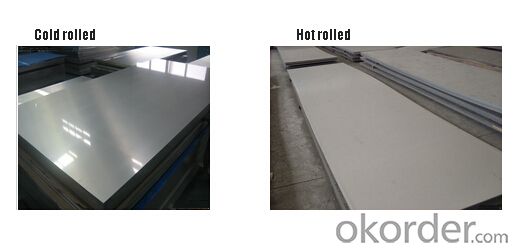
Packing and Loading:
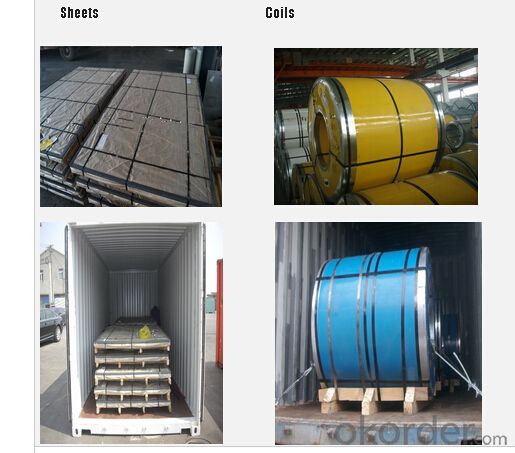
FAQ:
1. What's the quality?
Very fine, we have been exported to more than 30 countries.
2. How long get reply?
Usually within 24 hours
If you have any question about stainless steel sheets, do not forget to send the email to us! You will get the competitive Price and have a very good experience about the Buying Process! CNBM International Corporation is always your trustful friend!
- Q: Are stainless steel sheets suitable for industrial applications?
- Yes, stainless steel sheets are highly suitable for industrial applications due to their exceptional strength, durability, corrosion resistance, and heat resistance properties. They can withstand harsh conditions, maintain their integrity, and provide long-lasting performance, making them ideal for various industrial sectors such as automotive, aerospace, construction, and manufacturing.
- Q: Are stainless steel sheets resistant to erosion corrosion?
- Yes, stainless steel sheets are highly resistant to erosion corrosion. This is primarily due to the presence of chromium in the alloy, which forms a protective layer of chromium oxide on the surface of the steel. This layer acts as a barrier, preventing oxygen and moisture from reaching the underlying metal and thus protecting it from corrosion. Furthermore, stainless steel sheets are also resistant to erosion corrosion caused by various chemicals and acids. The alloy composition of stainless steel, which typically includes elements such as nickel and molybdenum, enhances its resistance to corrosion in harsh environments. This makes stainless steel sheets suitable for a wide range of applications, including in industries such as chemical processing, oil and gas, and marine. However, it is important to note that the resistance of stainless steel sheets to erosion corrosion can vary depending on the specific grade or alloy used. Different grades may have different levels of corrosion resistance, so it is essential to choose the appropriate grade based on the specific environmental conditions and requirements of the application. Regular maintenance and proper handling can also help prolong the lifespan and maintain the corrosion resistance of stainless steel sheets.
- Q: What is the weldability of stainless steel sheets?
- The weldability of stainless steel sheets is typically regarded as favorable due to the high percentage of chromium present in stainless steel. This chromium forms a passive oxide layer on the metal's surface, which contributes to exceptional corrosion resistance and the prevention of heat-affected zones during welding. Nevertheless, the weldability of stainless steel can differ based on the specific grade and thickness of the sheets. Austenitic stainless steels, such as 304 and 316, are known for their high weldability and can be easily joined using various welding techniques like TIG and MIG. Conversely, martensitic or duplex stainless steels may possess lower weldability due to elevated carbon content or distinct microstructures. These grades may necessitate preheating and post-weld heat treatment to prevent cracking and maintain desired mechanical properties. Moreover, the thickness of stainless steel sheets can impact weldability. Thicker sheets may require increased heat input and specialized welding procedures to ensure proper fusion and prevent distortion. Overall, stainless steel sheets are generally considered to possess good weldability. However, it is crucial to consider the specific grade and thickness of the sheets, as well as the required welding techniques and procedures, to achieve optimal results. Seeking professional guidance and expertise in stainless steel welding is recommended to ensure successful and long-lasting welds.
- Q: Are stainless steel sheets suitable for chemical processing plants?
- Yes, stainless steel sheets are highly suitable for chemical processing plants. Stainless steel is known for its excellent corrosion resistance, making it ideal for environments where chemicals are present. It is resistant to a wide range of chemicals, including acids, alkalis, and solvents, which are commonly used in chemical processing plants. Stainless steel sheets also offer high strength and durability, allowing them to withstand harsh operating conditions and maintain their structural integrity over time. They are also easy to clean and maintain, ensuring a hygienic environment in chemical processing plants. Additionally, stainless steel sheets have good thermal properties, making them suitable for applications involving high or low temperatures. They also exhibit low magnetic permeability, which can be beneficial in certain chemical processing operations. Overall, stainless steel sheets are a popular choice in chemical processing plants due to their corrosion resistance, strength, durability, and ease of maintenance.
- Q: Can stainless steel sheets be used in manufacturing processes?
- Indeed, manufacturing processes can utilize stainless steel sheets. This highly adaptable and resilient material is frequently employed in diverse industrial sectors. Thanks to its exceptional resistance to corrosion, strength, and ability to endure high temperatures, stainless steel sheets are particularly suitable for manufacturing processes that demand materials capable of withstanding harsh conditions. These include chemical processing, food and beverage production, pharmaceutical manufacturing, and automotive production. Stainless steel sheets can be molded, cut, welded, and machined to meet precise manufacturing specifications, making them a favored option within the industry.
- Q: Are stainless steel sheets suitable for outdoor staircases?
- Yes, stainless steel sheets are suitable for outdoor staircases. Stainless steel is a durable material that is resistant to corrosion and extreme weather conditions, making it an excellent choice for outdoor applications. Additionally, stainless steel sheets can be easily cleaned and maintained, ensuring their longevity and aesthetic appeal.
- Q: Can stainless steel sheets be used for stairs and railings?
- Yes, stainless steel sheets can be used for stairs and railings. Stainless steel is a versatile and durable material that is often used in architectural and interior design applications. It is resistant to corrosion, which makes it suitable for outdoor use and areas with high humidity or exposure to chemicals. Stainless steel sheets can be fabricated into various shapes and sizes, making them ideal for constructing stairs and railings with a sleek and modern look. Additionally, stainless steel is easy to clean and maintain, making it a practical choice for areas with high traffic or public spaces.
- Q: What are the different types of stainless steel sheet finishes for automotive applications?
- Some of the different types of stainless steel sheet finishes for automotive applications include brushed, polished, satin, mirror, and textured finishes. These finishes vary in terms of appearance, texture, and level of reflectivity, providing options for various aesthetic preferences and functional requirements in the automotive industry.
- Q: How do stainless steel sheets compare to other types of metal sheets?
- Stainless steel sheets have several advantages over other types of metal sheets. They are highly resistant to corrosion, making them suitable for various applications in industries such as automotive, construction, and food processing. Stainless steel sheets also offer exceptional strength and durability, ensuring long-lasting performance. Additionally, they have an attractive appearance, making them popular for aesthetic purposes. While stainless steel sheets may be slightly more expensive than other metal sheets, their numerous benefits make them a worthwhile investment.
- Q: How do I prevent fretting corrosion on stainless steel sheets?
- Fretting corrosion can be a common issue with stainless steel sheets, but there are several steps you can take to prevent it: 1. Proper Handling: When handling stainless steel sheets, it is crucial to avoid any scratching or rubbing of the surface that could lead to fretting corrosion. Use gloves and avoid contact with other metals or rough surfaces. 2. Cleaning: Regularly clean the stainless steel sheets using mild detergents or specialized stainless steel cleaners. This helps remove any contaminants that can initiate corrosion and also prevents the build-up of dirt or grime that can contribute to fretting corrosion. 3. Lubrication: Applying a suitable lubricant or anti-seize compound on the contact surfaces can minimize friction and prevent fretting corrosion. This is especially important in applications where there is repeated movement or vibration. 4. Avoiding Metal-on-Metal Contact: Whenever possible, try to isolate stainless steel sheets from direct contact with other metals. This can be done by using insulating materials, gaskets, or non-metallic spacers to create a barrier between the stainless steel and potentially corrosive materials. 5. Regular Inspection: Periodically inspect the stainless steel sheets for any signs of fretting corrosion, such as small cracks, discoloration, or pitting. Early detection allows for prompt action to prevent further damage. 6. Protective Coatings: Applying a protective coating, such as a passivation treatment or a corrosion-resistant paint, can provide an additional layer of protection against fretting corrosion. Consult with a professional to determine the most suitable coating for your specific application. 7. Proper Storage: When not in use, store stainless steel sheets in a clean, dry environment to minimize exposure to moisture or corrosive substances. Ensure that the storage area is well-ventilated and free from any contaminants that could potentially initiate fretting corrosion. By following these preventive measures, you can significantly reduce the risk of fretting corrosion on stainless steel sheets and prolong their lifespan.
Send your message to us
Stainless Steel Sheet Price 316l with No.4 Surface Treatment
- Loading Port:
- Shanghai
- Payment Terms:
- TT OR LC
- Min Order Qty:
- 500 m.t.
- Supply Capability:
- 5000000 m.t./month
OKorder Service Pledge
OKorder Financial Service
Similar products
Hot products
Hot Searches
Related keywords
